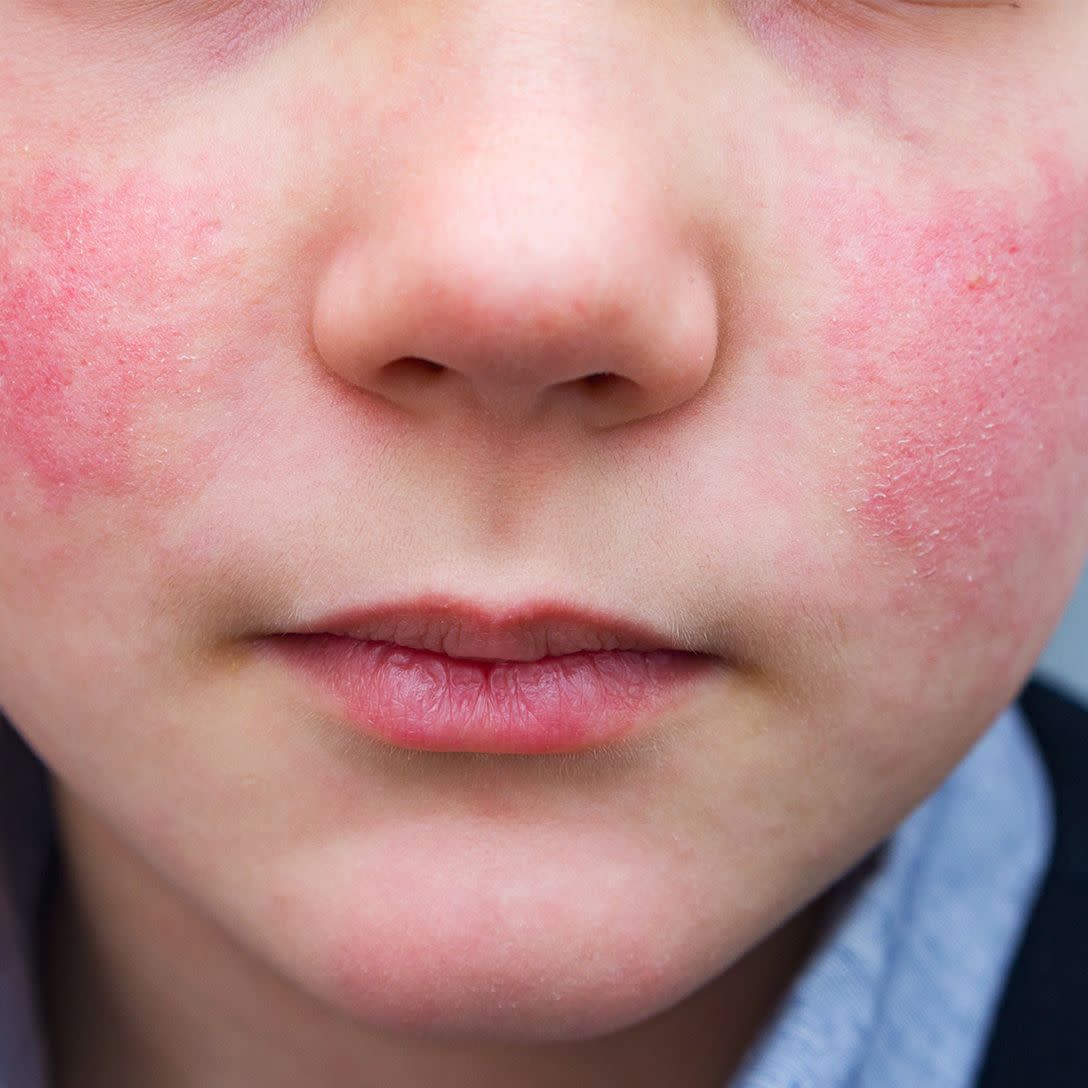6 Top Fifth Disease Symptoms to Look Out for During the New Surge
If you recently heard people mention Fifth Disease (also known as Slapped Cheek Disease or human parvovirus B19), and wonder what's going on, you're not alone. Last week, the Centers for Disease Control and Prevention (CDC) released a health advisory "to notify healthcare providers, public health authorities, and the public about current increases in human parvovirus B19 activity in the United States.”
According to the CDC, the parvovirus B19 infection rate was less than a 3% in all age groups from 2022 to June 2024. Then in June, the infection rate suddenly jumped to 10%. “The greatest increase was observed among children aged 5 to 9 years, from 15% during 2022 to 2024 to 40% in June 2024,” the CDC's statement reads.
To find out what this warning means for families, we consulted with experts to learn about parvovirus B19 symptoms and treatment.
What is Fifth disease?
Despite the recent rise of parvovirus B19, the disease has been around since before its discovery in 1974. “To this day, this is a common illness among elementary school-aged children,” says Nikhil Bhayani, M.D., an assistant professor at Burnett School of Medicine at Texas Christian University. While outbreaks usually occur during winter and spring months, they can pop up at any time, he adds.
The virus is commonly known as Fifth Disease “because it was the fifth in a list of common childhood rash illnesses, which also included measles, scarlet fever, rubella and roseola,” says Robert Biernbaum, D.O., the Chief Medical Officer at WellNow Urgent Care. “The virus spreads through respiratory droplets and is contagious before the rash appears, making it difficult to prevent. Good hygiene, such as frequent handwashing, can help reduce the risk of spreading the virus.”
“As kids head back to school and are in close contact with each other, it allows parvovirus to spread more easily,” he says. This is especially true “among younger kids who might not be as practiced in daily handwashing and are more prone to put fingers and hands into their mouths, transmitting the virus,” he continues. “The CDC's message is a good reminder to parents and kids to get into good hygiene habits and be educated/aware of the possible virus.”
Fifth disease symptoms
According to the CDC, some people who get infected with the virus will experience no symptoms. Others will likely experience “typically mild” symptoms that “can go away on their own,” says Laura Purdy, M.D., M.B.A., a board-certified family medicine physician and founder of SWELL Medical. Those symptoms include:
Fever
Headache
Cough
Sore throat
Rashes
Joint pain
Dr. Bhayani says there are two phases of infection. The first phase of illness — which lasts five days — is associated with fever, myalgia (muscle pain) and malaise and develops approximately seven days after infection, he explains. “In the second phase of illness — occurring 7 to 10 days after the first phase — children often present with a facial rash (the 'slapped cheek' appearance), which may be followed by body rash or joint pain.”

Who is at risk of contracting Fifth disease?
“Fifth disease is most common and prevalent in children,” says Dr. Biernbaum. “However, if exposed, it can be contracted by adults as well.”
Since it spreads from person to person “via a cough or sneeze, really anyone who is around others with the virus can be infected,” adds Dr. Purdy.
However, according to Dr. Bhayani, those most at risk of complications are “women who are less than 21 weeks pregnant, elementary-aged school children and anyone with a compromised immune system.”
Fifth disease treatment
Unfortunately, “no vaccine or treatment is available,” says Dr. Bhayani.
However, it is typically mild and “resolves on its own without medical treatment,” says Dr. Biernbaum. “Staying rested, hydrated and taking an over-the-counter acetaminophen (Tylenol) or ibuprofen (Advil, Motrin) can help manage fever and discomfort. Antihistamines can help with the itching, along with wearing loose and comfortable clothing.”
Dr. Purdy also recommends that those experiencing symptoms “keep activity and stress levels low to help yourself recover.”
What should you do if you think you have Fifth disease?
“People with Parvovirus B19 should seek medical attention if a high fever occurs or their symptoms seem to worsen,” says Dr. Biernbaum. People who are pregnant and suspect they may have human parvovirus B19 should also talk to their physician. “Unfortunately, people are contagious typically a week before the rash appears," adds Dr. Biernbaum. "Patients no longer need to isolate and are no longer contagious after the rash presents.”
You Might Also Like
